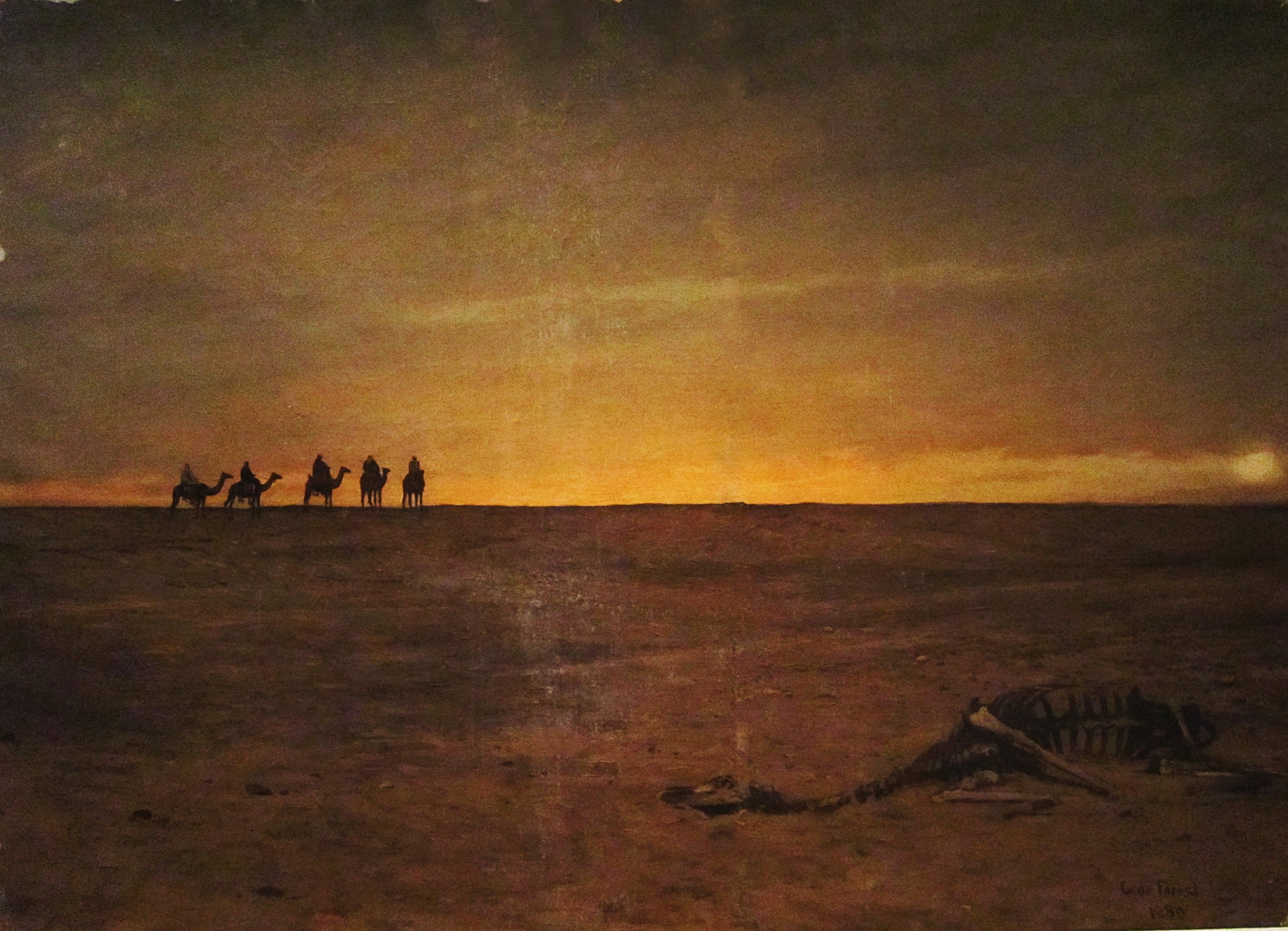Signed lower right: L de Forest 1880
36 x 48 in. (2010-007)The Wreck is about the tragic nature of life. It portrays life and death—life represented by travelers and their camels and death by the skeleton of a camel. But much of the emotional resonance of de Forest’s Orientalist work is generated by its setting—the desert. As a subject of art, the desert simplifies the conditions of existence, reducing experience to its tragic essence—challenge, sacrifice, suffering, purification, revelation, and, finally, death. Camels—often called the ships of the desert—were necessary for survival in the Sahara. At the time de Forest conceived his painting, the sea was popularly used in both literature and art to depict the great life-and-death themes of human existence.
From a wealthy family, de Forest (1850–1932) was taught and mentored by his great uncle Frederic Edwin Church (1826–1900), the Hudson River painter and Oriental enthusiast. In Rome, de Forest also studied with the Italian Orientalist painter Hermann Corrodi (1844–1905). The Wreck was among de Forest’s most widely exhibited and best-known paintings. It was exhibited three times in 1880: at the National Academy of Design and The Century Association in New York City and at the Louisville Industrial Exhibition in Kentucky. De Forest hung The Wreck in the parlor of his Indian-style home at 7 East Tenth Street in New York City’s Washington Square.



